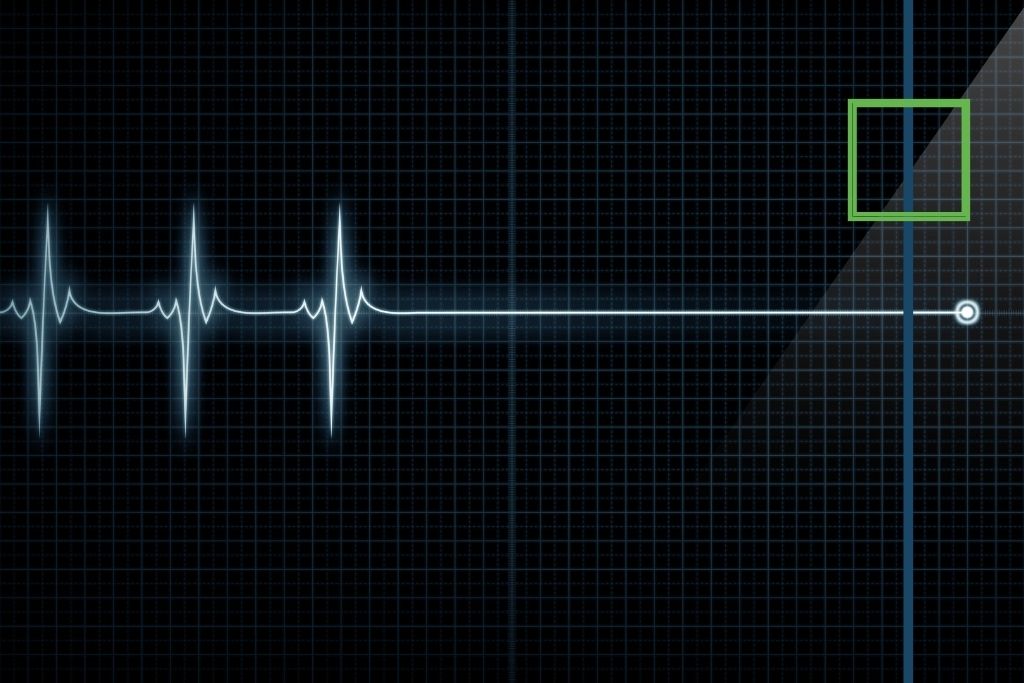What is Heroin?
Heroin is an opioid drug made from morphine, a natural substance taken from the seed pod of the various opium poppy plants grown in Southeast and Southwest Asia, Mexico, and Colombia. Heroin can be a white or brown powder, or a black sticky substance is known as black tar heroin. Heroin is part of a class of drugs called opioids. Other opioids include some prescription pain relievers, such as codeine, oxycodone, and hydrocodone.
People inject, sniff, snort, or smoke heroin. Some people mix heroin with crack cocaine, a practice called speedballing. Heroin enters the brain rapidly and binds to opioid receptors on cells located in many areas, especially those involved in feelings of pain and pleasure and in controlling heart rate, sleeping, and breathing.
When heroin enters the brain, it attaches to molecules on cells known as opioid receptors. These receptors are located in many areas of the brain and body, especially areas involved in the perception of pain and pleasure and a part of the brain that regulates breathing.

Heroin often contains additives, such as sugar, starch, or powdered milk, that can clog blood vessels leading to the lungs, liver, kidneys, or brain, causing permanent damage. Also, sharing drug injection equipment and having impaired judgment from drug use can increase the risk of contracting infectious diseases such as HIV and hepatitis.
What are Narcotics?
Also known as “opioids,” the term “narcotic” comes from the Greek word for “stupor” and originally referred to a variety of substances that dulled the senses and relieved pain. Though some people still refer to all drugs as “narcotics,” today “narcotic” refers to opium, opium derivatives, and their semi-synthetic substitutes. With less uncertainty regarding its meaning, a more current term for these drugs is “opioid.” Examples include the illicit drugs heroin and pharmaceutical drugs like OxyContin, Vicodin, codeine, morphine, methadone, and fentanyl.
What is their origin?
The poppy Papaver somniferum is the source for all-natural opioids, whereas synthetic opioids are made entirely in a lab, including meperidine, fentanyl, and methadone. Semi-synthetic opioids are synthesized from naturally occurring opium products, such as morphine and codeine, including heroin, oxycodone, hydrocodone, and hydromorphone. People can obtain narcotics from friends, family members, medicine cabinets, pharmacies, nursing homes, hospitals, hospices, doctors, and the Internet.
Is Heroin a Narcotic or a Stimulant?
The word “narcotic” is often misused. While the term “narcotics” is often used to refer to any illicit substance, it technically means a substance derived from opium (opiates) or its synthetic replacements A narcotic is a drug (as in opium or morphine) that in moderate doses dulls the senses, relieves pain, and induces profound sleep but in excessive doses causes stupor, coma, or convulsions. Narcotics are also often confused with stimulants, which in many ways are actually the opposite, as stimulants’ effects are alertness and activity. Examples of narcotics include heroin, morphine and codeine, all of which are highly addictive. Prescription narcotics (opioids) are prescribed as analgesics, to treat pain.
Stimulants, sometimes called “uppers,” temporarily increase alertness and energy. The most commonly used street drugs that fall into this category are cocaine and amphetamines. Prescription stimulants come in tablets or capsules. They are swallowed, injected in liquid form, or crushed and snorted when abused.
Heroin is not a stimulant. It is the opposite of a stimulant: instead of accelerating the central nervous system, heroin suppresses it. Sometimes, heroin is combined with illicit stimulants like cocaine and taken as a speedball. For example, a person may mix the two so that the cocaine combats the sedating effects of heroin.
Heroin is a central nervous system depressant. Like other opioids, it slows down or depresses activity in the central nervous system. The drug achieves its effects by binding to mu-opioid receptors in the brain. It also targets the brain’s reward system, leading to a compulsion to take the drug, which can result in addiction.
Street Name of Heroin
Heroin is currently a Schedule I drug on the nation’s list of controlled substances. This means that it is completely illegal, and there are no medical uses for it. Because of these factors, there is a long list of drug slang terms for heroin and plenty of colloquial language around its use and its culture.
The culture around heroin and the manufacturing and distribution of this substance are also constantly evolving naturally and due to necessity and new terms are created to avoid detection by police officers.
Common general slang terms for heroin itself include:
- Dope
- Smack
- H
- Junk
- Skag
- Snow
- Horse
- China white
- Brown
- Beast
- Hero

What are the effects of heroin?
Many people who have tried to beat their addiction have relapsed or returned to it several times after a period of sobriety. Heroin is one of the most addictive substances in existence, and an addiction to this drug is hard to overcome without professional heroin addiction treatment. Addiction to heroin is treatable. Although it is possible to recover from heroin addiction, it’s not easy.
Heart attack
Chronic heroin injectors may develop collapsed veins, infection of the valves and heart linings. Other cardiovascular effects include heart failure, blood vessel damage, low blood pressure, collapsed veins, and heart attack. According to a scientific statement from the American Heart Association, out-of-hospital cardiac arrests triggered by opioid overdose are a significant cause of death among adults 25 to 64.
More than 15% of the opioid overdose emergency medical service cases in 2016 included cardiac arrest. Opioid-associated out-of-hospital cardiac arrest differs from other forms of cardiac arrest in terms of how it abnormally changes body functions and the different ways it presents.
Black tar heroin users were at higher risk for acute myocardial injury (the medical name for heart attack), after heroin inhalation and binge drinking. The cause might be a heroin-induced cardiotoxic effect or vasospasm compounded by the presence of binge drinking.
Infections
Heroin can decrease and suppress T and B immune cells. It can lower someone’s ability to fight infections, viruses, and bacteria. The way ssomeone uses heroin and other forms of the drug can also put them at risk for infection. People who use heroin as an injection drug and share needles are at risk for hepatitis C and HIV. In the case of black tar heroin abuse, they are frequently mixed with alcohol or other toxic substances, which increases the risk of overdose.
Heroin users were at higher risk for wound botulism. Wound botulism is a potentially fatal, descending, flaccid, paralysis that results when spores of Clostridium botulinum germinate in a wound and elaborate neurotoxin. This can lead to muscle weakness, breathing difficulties, and be lethal.
According to the Center for Disease Control and Prevention (CDC), from September 2017 to April 2018, nine cases of wound botulism were reported in San Diego County, California. All patients reported injecting heroin, and seven used black tar heroin, including subcutaneous injection in six patients. Symptoms were first attributed to drug intoxication for four patients; two received the opioid overdose reversal medication naloxone without improvement in symptoms. One patient died.
Lung disease
Lung problems, including various types of pneumonia, may result from the poor health of the user as well as from heroin’s depressing effects on respiration. In addition to the effects of the drug itself, street heroin often contains toxic contaminants or additives that can clog blood vessels leading to the lungs, liver, kidneys, or brain, causing permanent damage to these vital organs.
Heroin use was associated with increased risk for adverse respiratory outcomes, including respiratory-related death, among older adults with chronic obstructive pulmonary diseases (COPD). Having an existing lung disease is a leading indicator of death from an opioid overdose. This is because of the decreased lung capacity. Individuals with existing lung conditions are more likely to die from an overdose than their counterparts without existing lung disease.
Short-term effects of heroin
- Dry mouth
- Warm flushing of the skin
- Heavy feeling in the arms and legs
- Nausea and vomiting
- Severe itching
- Clouded mental functioning
- Going “on the nod,” a back-and-forth state of being conscious and semiconscious
Long-term effects of heroin
- Insomnia
- Collapsed veins for people who inject the drug
- Damaged tissue inside the nose for people who sniff or snort it
- Infection of the heart lining and valves
- Abscesses (swollen tissue filled with pus)
- Constipation and stomach cramping
- Liver and kidney disease
- Lung complications, including pneumonia
- Mental disorders such as depression and antisocial personality disorder
- Sexual dysfunction
What is their effect on the mind?
Opiates such as heroin act on a number of receptors that the human brain uses to recognize and deal with pain. For this reason, this class of drugs has long been a resort for doctors and patients in trying to cope with pain management. Opiates also tend to influence signals that control a variety of involuntary bodily functions, such as breathing, heart rate, and sleep cycles.
The brain itself releases a certain amount of natural opiates. One problem that occurs in people with drug habits is that an outside supply of opiates reduces the brain’s need to generate more, leading to an irregular cycle of ups and downs as the body fails to regulate itself properly. This can increase dependency issues as the brain requires outside input to achieve the same pain-reducing and function-regulating benefits it previously managed naturally.
As is the case with many addictive substances, the brain releases dopamine, a chemical that drives the human impulse to seek anything needed for its survival. Dopamine release regulates a variety of positive sensations from maternal bonding with newborns to the friendship bonds between family members. It also can drive the impulse to eat, drink and do drugs. The release of dopamine that occurs when someone gets a hit of heroin can reinforce becoming dependent upon it.
How can a heroin overdose be treated?
Whatever the form, powdered heroin, prescription opioids, or black tar heroin, a user is always at risk for overdose. When people overdose on heroin, their breathing often slows or stops. This can decrease the amount of oxygen that reaches the brain, a condition called hypoxia. Hypoxia can have short- and long-term mental effects and effects on the nervous system, including coma and permanent brain damage. In 2014, the U.S. Food and Drug Administration (FDA) approved the use of a medicine called naloxone (brand name Narcan) to reverse the effects of a heroin overdose. This type of medicine is called an antidote.
A person is at high risk for overdose any time it is used because it is often cut with highly potent substances like fentanyl or other toxins where only a small amount can cause an overdose. There is evidence that drug dealers may be adding fentanyl to increase the potency of their products, such as heroin. Therefore, many users who test positive for fentanyl and its analogs do not realize that they took the substance. Fentanyl is a potent synthetic opioid that is used as a pain reliever and as an anesthetic. It is approximately 50-100 times more potent than morphine.
Is heroin a narcotic? Knowing matters because it will help you understand what kind of substance you or your loved one is struggling with. We Level Up FL Treatment Center believes in making our clients substance-free as soon as possible so that they can return to their everyday lives. Although most heroin detox plans include a long-drawn-out taper, the goal at We Level Up Detox Facilities is to speed up this process and give the individual a fair chance at a life in recovery.
Make this your opportunity to reclaim your life from Heroin addiction. Call today to speak with one of our treatment specialists. Your call is private and confidential, and there is never any obligation.
